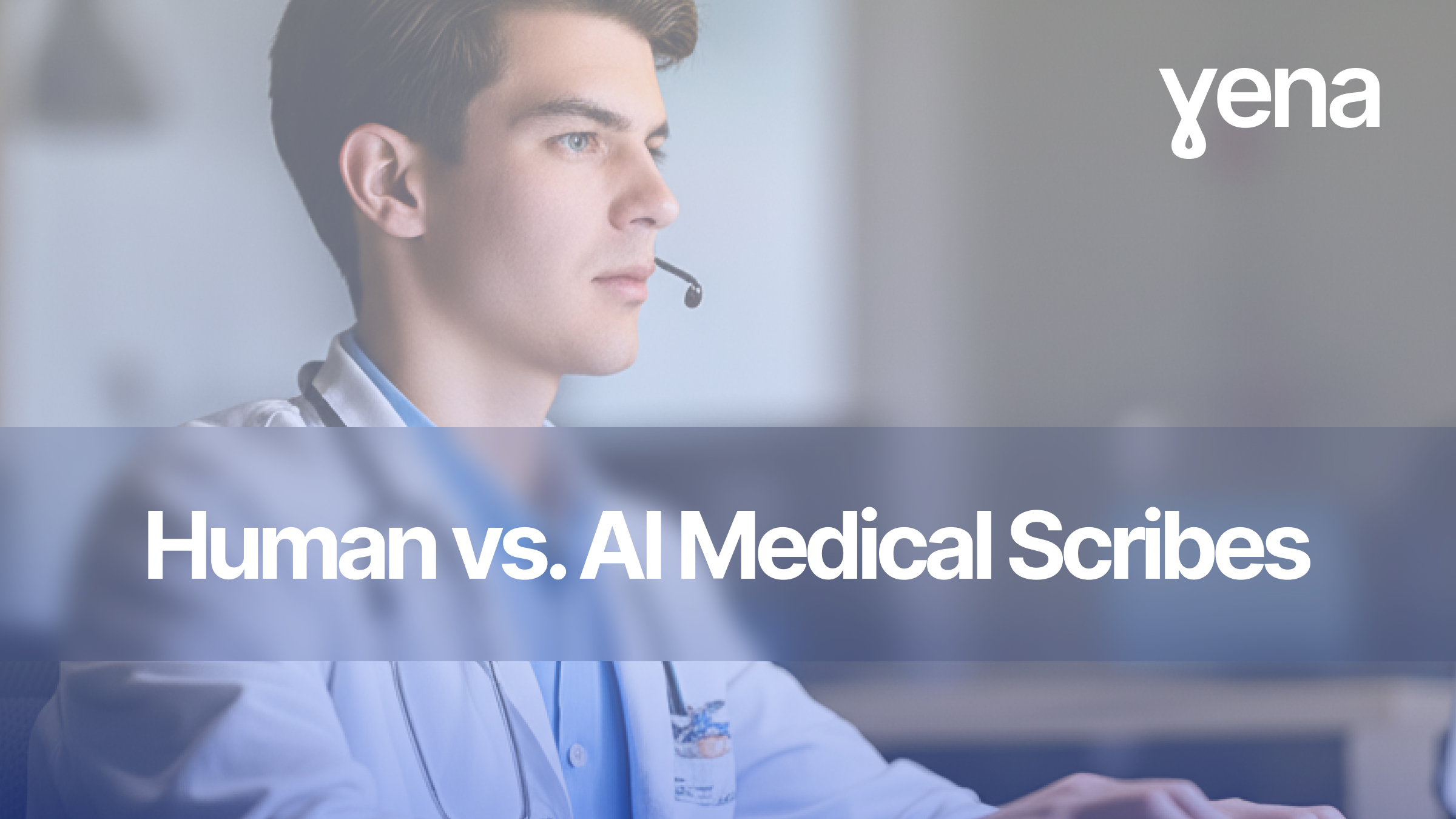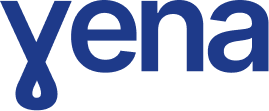
Comparing Human vs. AI Medical Scribes: A Comprehensive Analysis
The Evolution of Medical Documentation
The documentation burden in healthcare has reached unprecedented levels. Physicians now spend nearly two hours on electronic health record (EHR) tasks for every hour of direct patient care. This imbalance has sparked the rise of two distinct solutions: human medical scribes and AI-powered documentation tools. But which is the right choice for modern healthcare practices?
Understanding the Options
Human Medical Scribes
Traditional human scribes work directly with physicians, documenting patient encounters in real-time. After approximately one month of training, these professionals become proficient in complex EHR systems and learn each provider's documentation preferences.
Their responsibilities typically include:
- Immediate documentation during patient visits
- Accurate medical record keeping
- Administrative support
- Real-time clarification of unclear information
Human scribes excel at observing non-verbal cues, understanding contextual nuances, and communicating directly with the healthcare team to ensure comprehensive documentation.
AI Medical Scribes
AI medical scribes like Vena use advanced technologies to automate the documentation process. These systems work through several sophisticated steps:
- Speech Recognition: Converting physician-patient conversations into text
- Natural Language Processing: Analyzing the text to filter unnecessary dialogue and structure key clinical information
- EHR Integration: Seamlessly integrating processed notes with existing systems
Modern AI scribes achieve impressive accuracy rates of 95-98% when transcribing medical speech, making them increasingly viable alternatives to human scribes.
At-A-Glance Comparison
| Feature | Human Medical Scribes | AI Medical Scribes |
|---|---|---|
| Cost | $2,667-$3,500/month | $99-$299/month |
| Accuracy | 96% | 95-98% with 7% hallucination rate |
| Processing Time | 2-3 days per session | 5 minutes per session |
| Contextual Understanding | High | Limited |
| Non-verbal Cues | Can interpret | Cannot detect |
| Implementation Time | 8-12 weeks | 2-4 weeks |
| Availability | Limited by work hours | 24/7 |
| Adaptability to Specialties | High with proper training | Variable by specialty |
| Need for Supervision | Requires management | Minimal oversight |
| Training Required | Extensive | Minimal |
The Cost Equation
Perhaps the most significant difference between human and AI scribes lies in their financial impact:
AI Medical Scribes:
- Monthly cost: $99-$299 per provider
- No training, benefits, or turnover costs
- Consistent monthly expense
Human Medical Scribes:
- Monthly cost: $2,667-$3,500 ($32,000-$42,000 annually)
- Additional costs for hiring, training, benefits, and managing turnover
- Higher long-term investment
This represents a 60-75% cost reduction when using AI scribes compared to human alternatives. For practices managing tight margins, this difference can be decisive.
Accuracy and Performance Comparison
Speed and Efficiency
AI clearly outperforms humans in processing speed:
- AI medical scribes: Process a 30-minute encounter in approximately 5 minutes
- Human scribes: Require 2-3 days to process the same amount of information
However, this speed advantage comes with a tradeoff: physicians often spend additional time editing AI-generated notes, which can offset some of the time savings.
Error Rates and Quality
The accuracy comparison reveals interesting insights:
- AI medical scribes: 95-98% accuracy in medical speech recognition, but show a 7% "hallucination" rate (adding details never mentioned)
- Human scribes: 96% accuracy rate, though consistency can vary due to fatigue and distractions
Interestingly, medical professionals hold technology to higher standards—surveys indicate they accept lower error rates for AI (6.8%) compared to humans (11.3%).
Contextual Understanding
This is where human scribes maintain a significant advantage. AI systems struggle with:
- Interpreting non-verbal communication
- Understanding implicit context
- Identifying information that requires clarification
- Processing complex specialty-specific terminology
Human scribes excel at picking up contextual nuances and subtle language that AI might miss, resulting in more comprehensive documentation in complex cases.
Implementation Considerations
Implementing either solution requires careful planning and resources:
AI Scribe Implementation
AI implementation typically involves:
- Initial setup and configuration (1-2 days)
- Training period for the AI to learn provider preferences (2-4 weeks)
- Integration with existing EHR systems (varies by system)
- Ongoing maintenance and updates
The learning curve for AI systems is relatively steep initially but flattens quickly as providers become comfortable with the technology.
Human Scribe Implementation
Human scribe programs require:
- Recruitment and hiring processes (2-4 weeks)
- Comprehensive training program (4-8 weeks)
- Shadowing and progressive responsibility phases (2+ weeks)
- Ongoing management and quality control
Human scribes require more upfront investment in training but can adapt quickly to specific provider needs and preferences.
Measuring ROI and Success
Regardless of which solution you choose, measuring success through key performance indicators is essential:
Time Savings
- AI scribes save physicians up to 3 hours daily on documentation
- Human scribes typically save around 70 minutes of EHR time per day
- Studies show AI scribes can reduce documentation time by up to 72% for clinicians who fully adopt the system
Cost Benefits
Beyond direct costs, both options create financial benefits:
- Mid-sized hospitals using AI scribes save up to $1 million annually from improved efficiency
- Practices with AI documentation see 40% fewer audit-triggered repayments
- Both solutions enable physicians to see more patients—potentially generating $125,000-$200,000 in additional annual revenue by seeing just 2-3 more patients daily
Patient Satisfaction
Documentation solutions dramatically improve patient experiences:
- 81% of patients report their doctor spent less time looking at computer screens with AI scribes
- 71% of patients had more time to talk with their physician
- Healthcare organizations see 4.5-8% improvements in patient satisfaction scores after implementing documentation solutions
Which Option Is Right for Your Practice?
The decision between human and AI scribes depends on your specific practice needs:
Consider AI scribes if:
- Cost reduction is a primary concern
- Your practice handles mostly straightforward, routine cases
- You need 24/7 documentation capabilities
- Your EHR system supports seamless integration
Consider human scribes if:
- Your practice deals with complex cases requiring nuanced understanding
- You work in a highly specialized field with unique terminology
- Real-time clarification during patient encounters is essential
- You prefer the human touch in your documentation process
Many practices are now adopting hybrid models—using AI for routine cases and human scribes for complex encounters. This balanced approach leverages the strengths of both options while minimizing their limitations.
The Vena Advantage
Vena's AI-powered medical scribe platform offers the best of both worlds. Our system combines the efficiency and cost-effectiveness of AI with the contextual understanding typically associated with human scribes.
With Vena, you can:
- Save up to 3 hours daily on documentation
- Reduce documentation costs by up to 70%
- Improve patient satisfaction by focusing more on personal interaction
- Generate accurate, comprehensive documentation that adapts to your style and preferences
Unlike other AI solutions, Vena's advanced algorithms continually learn from your practice patterns, resulting in progressively more accurate documentation that truly sounds like you.
Conclusion
The choice between human and AI medical scribes represents more than a simple technology decision—it's a strategic choice about how your practice will operate in an increasingly digital healthcare environment.
While human scribes offer unmatched contextual understanding and adaptability, AI scribes provide significant cost advantages and efficiency gains. The right choice depends on your practice's unique needs, workflow patterns, and documentation challenges.
As AI technology continues to advance, the gap between human and AI scribes will likely narrow. Forward-thinking practices are increasingly adopting hybrid models that leverage both human expertise and AI efficiency to create optimal documentation workflows.
To find out which option best suits your practice, try Vena's free Basic Plan to experience the benefits of AI documentation firsthand.
References
- Deloitte Global Healthcare Report, 2025
- The Permanente Medical Group Implementation Study, 2024
- Stanford Primary Care Provider Study, 2024
- Harvard-McKinsey Healthcare AI Impact Report, 2024
- American Medical Association Documentation Burden Survey, 2024


